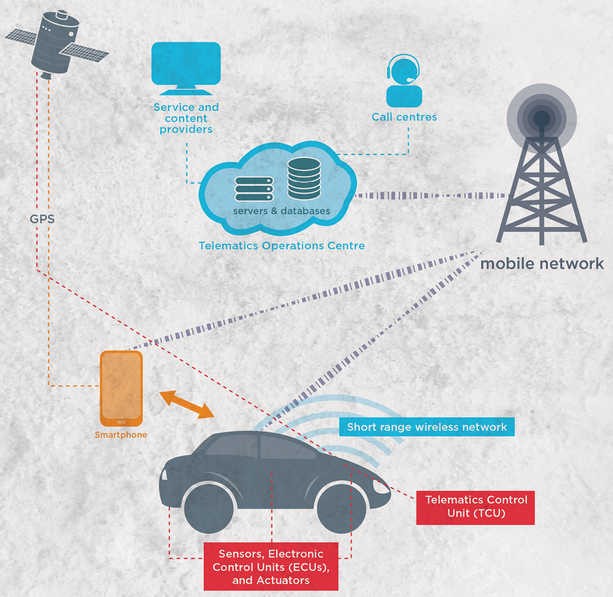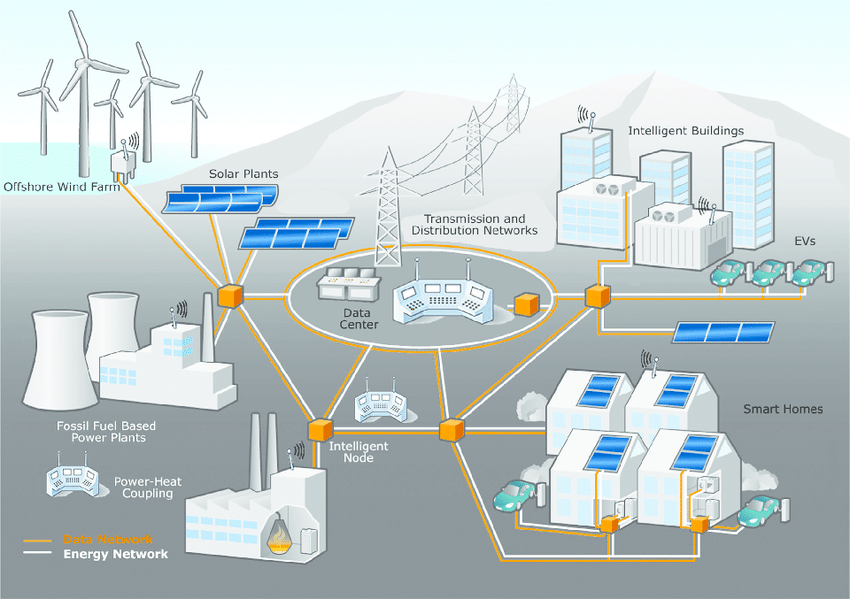
76M 5G IoT connections across 40+ use cases by 2025
5G is the fifth generation of mobile communication technology and the first that is specifically designed for various vertical IoT use cases with demanding requirements, including gigabit data rates, millisecond latencies, ultra-high network reliability and massive connection density.
IoT Analytics’ recent study on 5G reveals 44 different IoT use cases and estimates these use cases will account for 76M 5G connections by 2025 . This article highlights seven of the most promising 5G use cases in IoT settings that could have the largest market potential.
5G IoT Use cases #1: Vehicle Telematics

Automotive & Transportation (A&T) is expected to be the #1 sector for adoption of 5G technologies in IoT applications.
A&T is already one of the most “IoT” mature segments that already has millions of connected cars using telematics applications such as vehicle diagnostics, location tracking and user-based insurance. These applications mostly involve the transmission of small volumes of non real-time data collected from the vehicles and today they are mostly deployed over traditional cellular (2G/3G/4G) technologies, that in general provide a satisfactory performance to handle their current communication needs.
However, the launch of 5G offers the possibility to collect more granular data in real-time about the health and performance of the vehicle and the drivers’ behavior and enable the delivery of more sophisticated services (e.g., automotive OEMs and car dealerships) and new pricing plans (e.g., insurance companies).
While LTE will likely remain the leading connectivity technology for these applications in the near future, especially with the planned switch off of 2G and 3G networks in many areas of the world, in the next few years IoT Analytics expects many vehicle telematics implementations to support both 4G and 5G connectivity, to future-proof their solution and take advantage of 5G’s enhanced capabilities where available while operators continue their progress with network roll-outs.
- Example: Harman announces the first 5G-ready car telematics solution.
5G IoT Use cases #2: In-Vehicle Infotainment

In-Vehicle infotainment is another relatively mature A&T application that is expected to benefit a lot from 5G connectivity. This use case involves the delivery of information and entertainment services to drivers and passengers, such as updates on the current traffic situation or weather forecasts, but also more data-intensive video and music streaming.
Compared to its major alternatives (LTE), 5G connectivity offers the ability to enhance these applications and enable new ones, such as in-car retail and marketing or even AR/VR-based navigation systems and entertainment services.
While for the next couple of years vehicle infotainment on 5G is expected to be mostly via tethered connections (e.g., using a 5G smartphone for the car connectivity), the emergence of dual mode 4G/5G solutions for connected cars over the next few years, as highlighted in the previous paragraph, will pave the way for more sophisticated in-vehicle infotainment applications.
- Example: Nissan and NTT DoCoMo test AR- and 5G-boosted driving.
5G IoT Use cases #3: Smart Grid Automation

In the energy & utilities sector, 5G’s enhanced capabilities make the technology particularly suited to the real-time management and automation of the smart electricity grid. These solutions are aimed at optimizing operations and maintenance by quickly detecting and responding to faults along the grid, but also meeting the increasingly stringent demand on their grid, driven by trends such as the integration of Distributed Energy Resources (DER) like renewables into the power grid, tighter regulations and evolving cybersecurity threats.
In particular, the integration of these DER “micro-grids” to the electricity network is quite challenging due to the high variability of their energy production, and requires real-time control and automation of the feeder line systems (i.e., what manages the feeding of the generated energy into the grid) to avoid overload and ensure system reliability, but also extensive message signaling between all the micro-grids elements.
All of these translates into strict requirements in terms of communication latency and network reliability, that today can be fully satisfied only via wired communication technologies.
As a matter of fact, most utilities today already have a power grid monitoring system in place, typically based on wired communication networks over power lines (PLC), optical fiber or copper, while wireless communications are limited to the less mission-critical applications. However, as utility operators upgrade their grids to increasingly automate operations with new sensors and control system and integrate renewable energy sources and electric vehicle charging stations, 5G is expected to be largely adopted due to its higher deployment flexibility and lower cost compared to wired alternatives, while offering a similar level of performance.
- Example: Nokia, ABB and Kalmar successfully demonstrate 5G-based URLLC for smart electricity grids.
5G IoT Use cases #4: Mobile and Collaborative Robots

In the industrial sector, there is a general consensus that 5G is most relevant for connecting industrial robots with various degrees of mobility, from static collaborative robots to fully mobile robots such as autonomous guided vehicles (AGVs).
These robots have many sensors for situational awareness while technological advances are making them increasingly intelligent and able to autonomously perform various tasks, such as moving goods or carrying out repairs. As a result, they need to be able to process an increasing amount of data.
However, accommodating enough processing capabilities into these robots can be very challenging and expensive, especially for smaller robots. 5G can help solve these issues and thanks to its low latency and high reliability, 5G will make it easier to offload part (if not all) of this processing need to edge or cloud-based servers and thus minimize the hardware complexity (and cost) of the robots.
- Example: 5G Transformer project demonstrates a 5G connected cloud-based mobile robot performing warehouse operations.
- Example: Ericsson trials 5G to connect wireless production robots in Audi’s factory.
5G IoT Use cases #5: Video Surveillance

Video surveillance and analytics is another application that is expected to thrive with 5G connectivity. Due to the increasing threats to public safety in recent years, many governments and municipalities around the world are investing in public surveillance and security systems, and the trend is expected to accelerate in the future.
Today, the majority of public video surveillance systems still rely on wired connectivity, but the adoption of wireless communications such as Wi-Fi or cellular is gaining popularity due to an easier and faster set-up and generally lower cost compared to wired networks. While Wi-Fi is the preferred method in static CCTV systems, cellular connectivity, in particular LTE, is more popular for temporary static installations (e.g., construction sites, public events such as concerts, festivals, election rallies, etc.) and in mobile video surveillance (e.g., cameras installed on vehicles such as police cars, public transport, and surveillance drones or body-worn by law officers).
While LTE networks offer a decent level of performance for remote access to live and recorded HD video, the adoption of 5G will provide the performance boost required for more sophisticated video content analytics in real-time and the deployment of massive numbers of cameras.
- Example: Samsung and KDDI demonstrate demonstrate real-time transmission of UHD surveillance video via 5G.
5G IoT Use cases #6 & #7: Cooperative Intelligent Mobility

On the mid-long term, the largest impact that 5G is expected to have in the A&T sector is to enable the sharing of real-time information about traffic and road conditions among cars and other road users.
These new cooperative mobility and driver assistance services are for both for private and public transportation (represented by two different bubbles in Exhibit 1, respectively by cooperative mobility for private and intelligent urban mobility for public transport). This requires the build-up of a 5G-based V2X (Vehicle-to-Everything) infrastructure made of roadside sensors and V2X base stations, in addition to 5G communication devices into vehicles and other road users (e.g., pedestrians, cyclists, etc.).
By analyzing real-time traffic data collected from the roadside infrastructure and the vehicles on the road, such Intelligent Transportation Systems would be able to timely warn drivers about hazardous road conditions, traffic blocks and impending safety-critical situations ahead, increasing road safety and traffic efficiency.
Currently, cellular-based V2X communications are supported on LTE networks as part of the 3GPP Rel-14 & 15, while 5G-based V2X will be introduced as part of 3GPP Rel-16 set to be released in 2020.
- Example: SK Telecom is building a 5G-enabled intelligent transportation system in Seoul.
More information and further reading
Interested in learning more about the 5G market?
The seven 5G use cases discussed in this article are explored in much further depth, including numerous additional examples, in the 193-page 5G Market Report 2019-2025.

The report takes a deeper look at the 5G connectivity market, including the standardization process, spectrum analysis, technological building blocks, applications and use cases, the economics of 5G, market sizing and outlook, vendor landscape, drivers, challenges and trends.

IoT Analytics’ estimates the global installed base of 5G connected devices (both IoT and non-IoT) to reach 1.2B by 2025. The study, published in August 2019, also includes a 5G connectivity project database (20+ case studies), vendor list (120+ vendors) and market model data (29 tables) in Excel format.
A sample of the report and the database can be downloaded here.
Are you interested in continued IoT coverage and updates? Subscribe to our newsletter and follow us on LinkedIn and Twitter to stay up-to-date on the latest trends shaping the IoT markets. For complete enterprise IoT coverage with access to all of IoT Analytics’ paid content & reports including dedicated analyst time check out Enterprise subscription.
